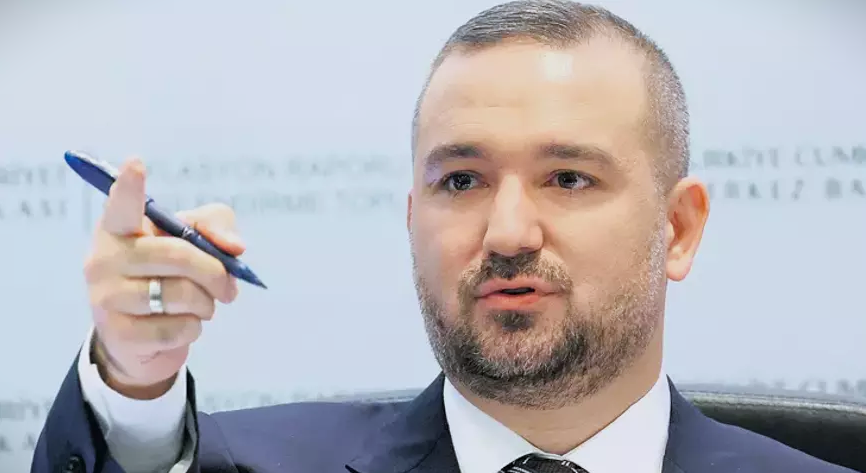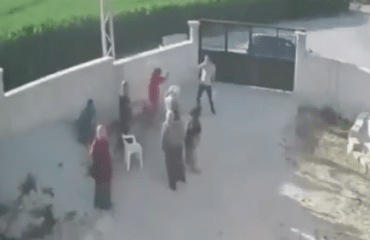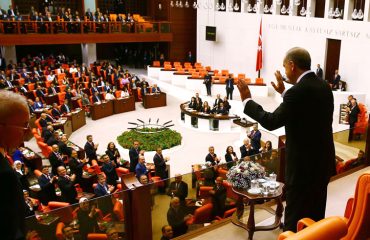

The Monetary Policy Committee, which Central Bank Governor Fatih Karahan will summon on March 21, will decide whether to keep the policy rate at 45 percent. On the other hand, there have been three discouraging developments regarding the fight against inflation since last month.
The Central Bank of the Republic of Türkiye’s Monetary Policy Committee (MPC) will convene on Thursday, March 21, and announce whether it will maintain the policy interest rate at its current level.
At the January 25th meeting, the policy rate had been raised to 45 percent; however, at the February 22nd meeting, the policy rate was kept unchanged, with the statement noting:
“The Committee assesses that the current level of the policy rate will be maintained until there is a significant and sustained decline in the underlying trend of monthly inflation and until inflation expectations converge to the projected forecast range. Monetary policy stance will be tightened in case a significant and persistent deterioration in inflation outlook is anticipated.”
Is inflation actually receding?
The question is: Has there been a significant and persistent deterioration in the inflation outlook since the February 22nd meeting?
It is likely to elaborate on three negative developments.
First, February inflation turned out to be higher than expected: 4.5 percent. Furthermore, this is seasonally unadjusted monthly inflation. Central Bank Governor Fatih Karahan stated in his presentation of the first inflation report of the year that they expected seasonally adjusted monthly inflation to be around 3 percent in the first half of the year, excluding January. Nonetheless, seasonally adjusted inflation was 4 percent in February.
Accordingly, does this indicate a ‘significant and persistent’ deterioration, as stated in the MPC announcement? Not solely. There is a significant deviation on a monthly basis; however, other indicators need to be examined to determine whether it is persistent.
Expected inflation is hiking
Secondly, expected inflation is on the rise. Data for the first three months of the year is available. Since January, there has been an upward trend in expected inflation. In January, inflation had been expected to be 42 percent by year-end; nonetheless, expected inflation rose to 43 percent in February and 44.2 percent in March.
Moreover, even the January figure was at the upper end of the Central Bank’s year-end forecast. Recall that the midpoint of the year-end forecast range was 36 percent, with the upper limit at 42 percent.
Movement in the exchange rate
Thirdly, and more notably, it is worthwhile to consider movements in the exchange rate and the possible reasons behind them.
There has been a noticeable upward trend in the exchange rate in recent weeks. Despite the decrease in foreign exchange reserves, implying that the Central Bank is intervening to curb movements in the exchange rate, these movements are observed. The value of the currency basket, consisting of half dollars and half euros, increased by 1.7 percent in January and 2.9 percent in February. They were below monthly inflation and indicated the limited real appreciation necessary for fighting inflation, as repeatedly emphasized by the Central Bank.
Conversely, the basket exchange rate increased by 3.8 percent in the first twenty days of March. March still has ten days to go, and the current increase in the exchange rate is already above the Central Bank’s seasonally adjusted 3 percent inflation forecast mentioned earlier.
Two ‘usual suspects’
Two of the three indicators I mentioned do not indicate a ‘persistent’ deviation. However, the third development is essential in terms of permanence. Therefore, it is necessary to evaluate the possible factors behind it.
There are two ‘usual suspects’: Firstly, changes in the net capital inflow from abroad. Every month from June to December 2023, the net capital inflow to Turkey exceeded what the current account deficit requires. However, in January 2024, there was a net capital outflow. Secondly, there have been long queues in front of foreign exchange bureaus recently; in other words, there is an increase in residents’ demand for foreign exchange.
Concerns about a U-turn
If there is a concern that “the exchange rate skyrocketed after the May elections, and a similar development may occur after the local elections,” this should be eliminated immediately. A more fundamental ground that I have repeatedly emphasized is that the current economic program only includes increases in interest and tax rates. There has also been a change in the authority of the economy. However, events since 2021, in particular, are still fresh in memory.
There is a discomfort that there could be a U-turn from the current incomplete program that needs to be addressed. By so doing, the recent developments in the exchange rate will be temporary, and there will be no ‘significant and persistent’ change in the inflation rate, as emphasized in the latest MPC statement.
Central Bank and TURKSTAT
It should now be clear that these grounds cannot be dispelled with mere words. Action speaks louder than words. Let me repeat: It should not be legally possible for Central Bank officials, especially the Governor, to be dismissed at any time; that needs to be ensured by the Central Bank’s law.
Likewise, as in previous years, confidence in the statistics announced by TURKSTAT needs to be restored. The institutional structure of TURKSTAT must be changed accordingly. The public sector requires a think tank in the field of economics.
Can the policy interest rate be increased?
Reestablishing the former State Planning Organization within this framework would be helpful. It is crucial for analyzing the current situation, making forecasts and alternative policy proposals, and for the green transformation process. I would say “establishing a fair and efficient legal system,” but that would be ‘too much’ to ask.
Structural reforms that can be easily implemented could change the atmosphere. Then, if the Central Bank increases the policy interest rate and this increase is reflected in deposit interest rates, things will get back on track.
Let us see what the future holds for us.


